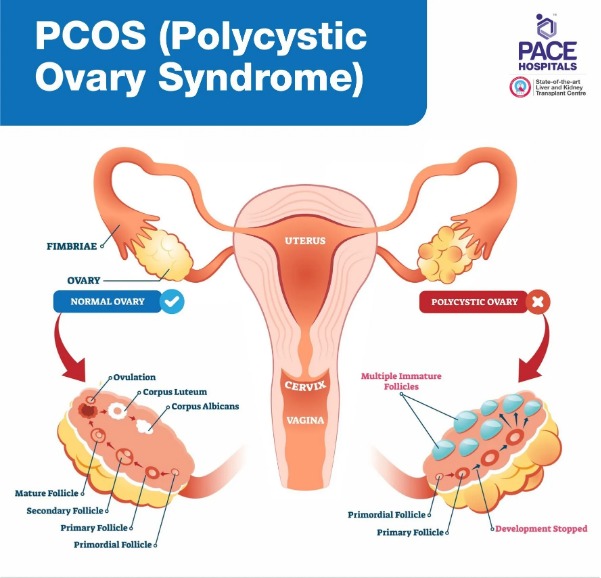
PCOD: A Woman’s Guide to Understanding, Managing & Thriving
Posted in :

PCOD: A Woman’s Guide to Understanding, Managing & Thriving
If you’re a woman struggling with irregular periods, sudden weight gain, acne, or unexpected hair growth, you might have heard the term **PCOD** thrown around. It’s a condition many of us face — often silently — without fully understanding what’s going on inside our bodies. In this article, I’ll walk you through what **PCOD** really means, how it affects your health, and what steps you can take to manage it with confidence and clarity.
—
What is PCOD? (PCOD Full Form)
Let’s start with the basics. The **PCOD full form** is **Polycystic Ovarian Disease**. It is a hormonal disorder that affects millions of women, especially those between the ages of 15 and 40.
In simple terms, women with PCOD have small cysts (fluid-filled sacs) on their ovaries. These cysts aren’t harmful, but they lead to **hormonal imbalances** — especially an increase in **androgens**, which are male hormones present in small amounts in women. This imbalance affects ovulation, menstrual cycles, fertility, weight, and even skin health.
—
पीसीओडी कैसे होता है? (What Causes PCOD?)
This is a question many of us have: **पीसीओडी कैसे होता है?**
Let’s break it down.
There isn’t one single cause of PCOD. It’s usually a combination of genetic, lifestyle, and environmental factors. Some of the most common reasons include:
**Insulin Resistance**
When your body becomes resistant to insulin, it produces more of it. High insulin levels can trigger the ovaries to produce more androgens, which interferes with ovulation.
**Genetics**
If your mother, sister, or aunt has PCOD, chances are higher that you might have it too. It often runs in families.
**Unhealthy Lifestyle**
Lack of physical activity, poor diet, stress, and irregular sleep patterns can all contribute to hormonal imbalances.
**Chronic Inflammation**
Low-grade inflammation in the body may also lead to PCOD by stimulating the ovaries to produce androgens.

Common PCOD Symptoms You Shouldn’t Ignore
Understanding the **PCOD symptoms** can help you identify the condition early and seek the right treatment. Every woman experiences it differently, but here are the most common signs:
1. Irregular or Missed Periods
Periods that come late, too early, or not at all are a classic sign of PCOD.
2. Excess Hair Growth (Hirsutism)
Due to high androgen levels, unwanted hair may grow on the face, chest, back, or abdomen.
3. Acne and Oily Skin
Hormonal fluctuations can lead to persistent acne, especially around the jawline and cheeks.
4. Weight Gain or Difficulty Losing Weight
Women with PCOD often gain weight easily and find it hard to lose, particularly around the belly area.
5. Hair Thinning or Hair Loss
Scalp hair may start thinning or falling out, similar to male-pattern baldness.
6. Mood Swings and Fatigue
Hormonal changes can affect your mood, sleep, and energy levels.
7. Infertility
Because PCOD affects ovulation, it can cause challenges when trying to conceive.
—
Managing PCOD Naturally & Effectively
The good news? PCOD is very **manageable**. With the right lifestyle changes and medical support, you can control the symptoms and live a healthy, vibrant life.
Here are a few proven ways to manage PCOD naturally:
1. Eat a Balanced Diet
Opt for a diet that is low in sugar and processed foods. Focus on:
* Whole grains (like oats, quinoa, and brown rice)
* Leafy greens and colorful vegetables
* Lean protein (chicken, fish, tofu, lentils)
* Healthy fats (avocados, nuts, seeds, olive oil)
2. Exercise Regularly
Physical activity can regulate your menstrual cycle, improve insulin sensitivity, and support weight loss. Aim for at least 30 minutes of exercise 5 days a week — be it walking, yoga, dancing, or strength training.
3. Manage Stress
Chronic stress worsens hormonal imbalances. Try incorporating meditation, journaling, deep breathing, or even creative hobbies into your daily routine.
4. Consult a Gynecologist or Endocrinologist
A doctor may prescribe hormonal medications, birth control pills, or insulin-sensitizing drugs like Metformin, depending on your individual condition.
5. Track Your Cycle
Using a period-tracking app helps monitor irregularities and share data with your doctor for better diagnosis and treatment.
—
PCOD vs PCOS: Are They the Same?
Many people confuse **PCOD** with **PCOS** (Polycystic Ovary Syndrome). Though they are related, they are not exactly the same:
| **Feature** | **PCOD** | **PCOS** |
| ———– | —————- | —————————————– |
| Prevalence | More common | Less common |
| Severity | Milder | More severe |
| Ovulation | Often occurs | Rare or absent |
| Fertility | Usually retained | Often impacted |
| Treatment | Lifestyle & diet | May need more intensive medical treatment |
—
A Personal Note: You’re Not Alone
Dealing with PCOD can feel overwhelming, but remember, you are not alone. So many women go through this, and many successfully manage it with patience, education, and the right support system.
What helped me personally was **shifting my mindset** — seeing PCOD not as a disease, but as a signal from my body to pause, pay attention, and care for myself more deeply. From eating better to setting boundaries and sleeping well, small steps created big changes in my health and confidence.
—
Key Takeaways
* **PCOD full form** is Polycystic Ovarian Disease.
* It’s caused by hormonal imbalances, insulin resistance, and sometimes genetics.
* Common **PCOD symptoms** include irregular periods, acne, weight gain, and hair issues.
* Lifestyle changes like eating healthy, exercising, and managing stress can go a long way.
* **पीसीओडी कैसे होता है**? It often stems from insulin and hormonal imbalances, worsened by poor lifestyle.

